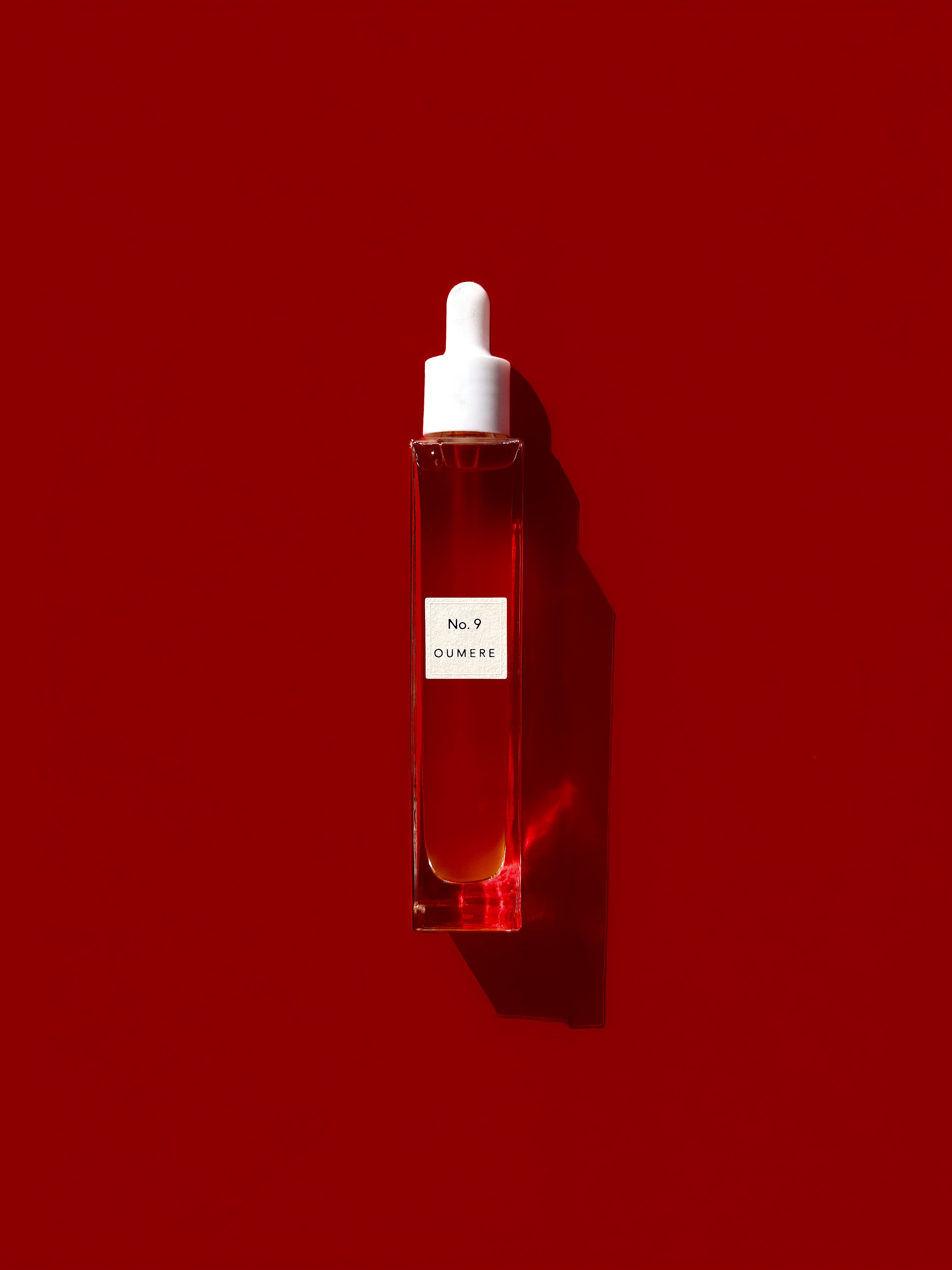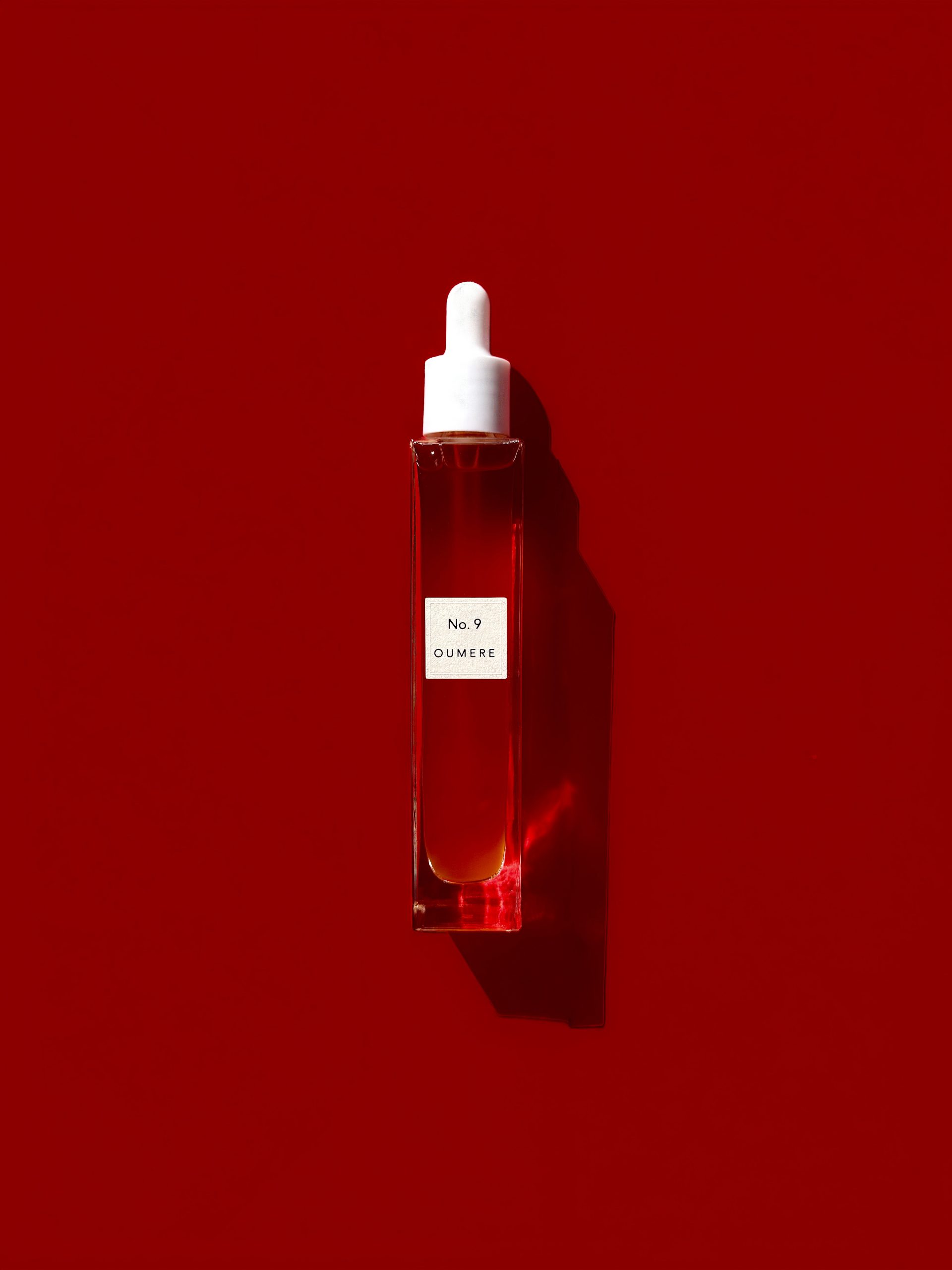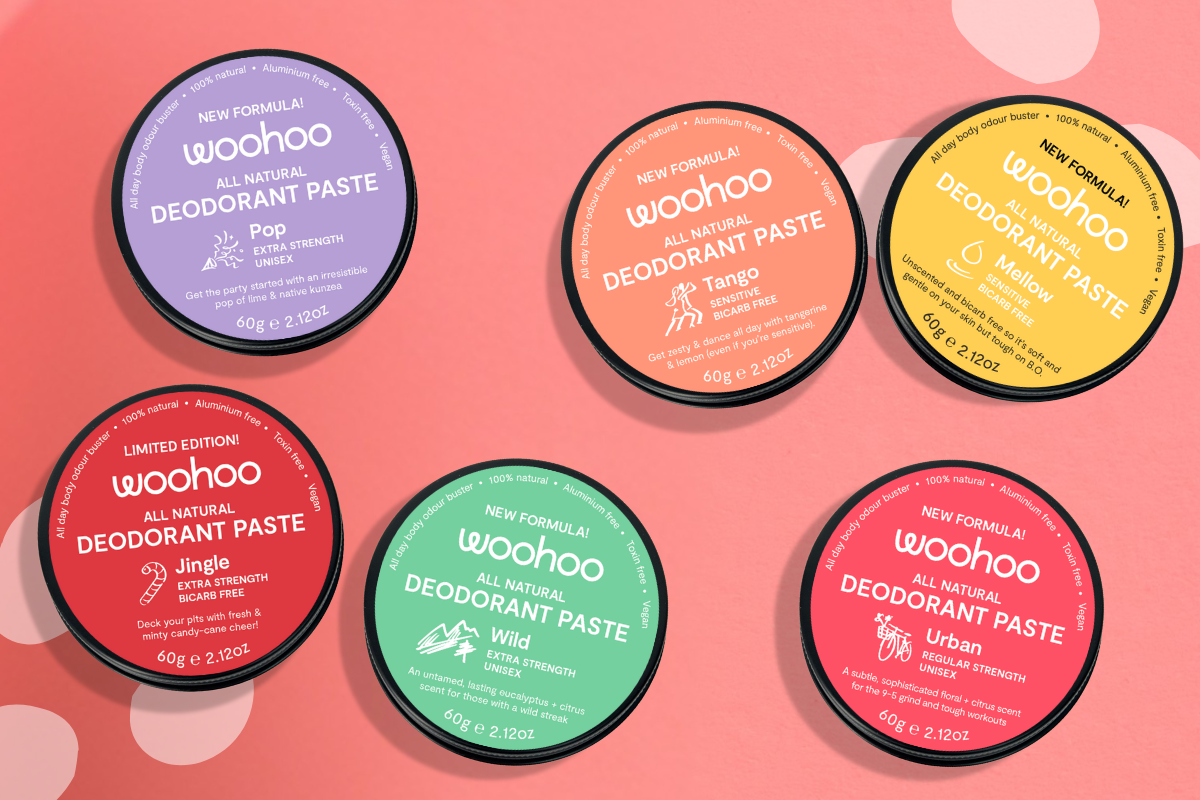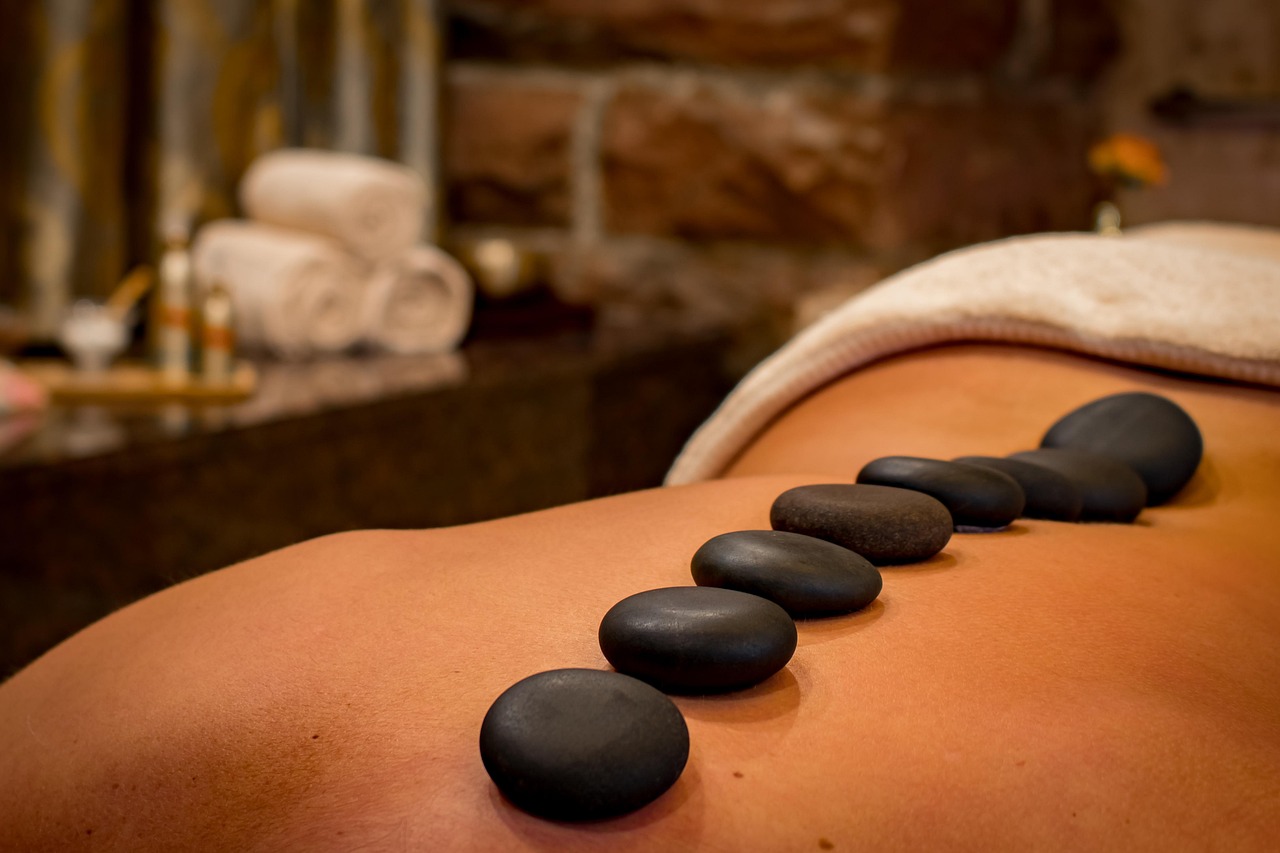About 15 years ago, during one of my biology classes, we had a discussion that stood out. The topic was aging and how it’s the result of accumulated damage over time. Eventually, the conversation shifted to telomeres—the protective caps at the ends of our DNA strands—and how every time our cells divide, those telomeres get a little shorter. Once they’re worn down enough, the cell can no longer divide properly, and tissues begin to show signs of aging.
That same week, I went to get my eyebrows waxed. As the strip was ripped off, I felt it—not just the hair coming out, but the top layer of my skin going with it. The waxing didnt just remove the hair. It’s removing skin. And every time you remove skin, your body is forced to regenerate it through cellular division. More division means more nicked telomeres. More nicked telomeres means accelerated aging.
I never waxed again.
Thin Skin is Aging Skin
I still get my eyebrows tweezed and I remember when I was first developing OUMERE, a brow technician asked me if I made a retinol. I said no. And she said “Good, because I can’t wax anyone who uses retinol—their skin is so thin, it just comes off with the paper.”
Retinol is the deity of the skin care echo chamber. From peer-reviewed studies to blogs and social media feeds, it reigns as the infallible god—incapable of wrongdoing, despite doing nothing but harm. I often come across posts where people lament the destruction retinol has caused: thinning skin, chronic redness, relentless peeling. Yet instead of reaching the obvious conclusion—that retinol is the problem—the blame is turned inward. The user didn’t use it correctly. They didn’t layer enough offerings—moisturizers, serums, toners—to soothe its wrath. They didn’t wait the proper number of minutes between steps to honor its divine process. They didn’t make enough sacrifices throughout their day to earn its favor.
No one stops to question whether this god is benevolent at all. Maybe it’s not a god. Maybe it’s a monster.
And maybe it belongs where all false idols go—into the trash, along with the sacred texts and false prophets that glorified it.
The Long Term Effects of Retinol
With that said, I think retinol is ok for acne in the short term, but I do not like it for anti-aging purposes. Despite being hailed as a “holy grail” in anti-aging, I believe this gold-standard ingredient may undermine the very goals it promises to achieve.
Peer-reviewed studies document two troubling effects of prolonged retinol use:
-
Epidermal Thinning
-
A 5-year clinical trial published in The British Journal of Dermatology found that topical retinoids reduced stratum corneum thickness by up to 30% in mature skin (Harrison et al., 2019). Thinner skin correlates with increased sensitivity, tearing, and impaired barrier function.
-
-
Photosensitivity Acceleration
-
Research in Photodermatology, Photoimmunology & Photomedicine demonstrates that retinol degrades under UV exposure, generating free radicals that amplify sun damage (Schwartz et al., 2021). This counteracts its purported anti-aging benefits.
-
-
Increased Inflammation- The accumulator of damage over time (aging)
-
Baumann L. (2007). “Skin ageing and its treatment.” Journal of Pathology.
This review points out that although retinoids improve clinical markers of aging, their mechanism includes irritation and inflammation, which are known contributors to cellular aging. -
Farage MA, et al. (2008). “Intrinsic and extrinsic factors in skin ageing: a review.” International Journal of Cosmetic Science.
This paper outlines that chronic inflammation and barrier disruption are aging mechanisms—and many topicals, including retinoids, trigger both.
-
The beauty industry rarely addresses these findings, as retinol remains a $2.3 billion market. Even the inventor of retinol found that long term use causes thinning of the stratum corneum:
“Topical tretinoin for photoaged skin.” Journal of the American Academy of Dermatology.
In this landmark study, Dr. Albert Kligman, inventor of Retin-A (tretinoin), found that while tretinoin improved the appearance of photoaged skin in the short term (through increased epidermal turnover), it also thinned the stratum corneum and triggered inflammation.
Even though retinol is often branded as “anti-aging,” the mechanism of action—stripping, irritating, inflaming, and over-stimulating cell turnover—is biologically pro-aging. The paradox is that people chase temporary smoothness while sacrificing the skin’s long-term structural integrity.
Retinol Doesn’t Just Age Your Skin—It Can Harm Your Other Organs, Too
The marketing of retinol stops at the surface. It’s sold as a topical miracle, targeting wrinkles and acne, but skin isn’t a coat of armor, it is a direct route to the body’s internal organs. Vitamin A and its derivatives—retinol, retinoic acid, isotretinoin are biologically active compounds capable of systemic absorption and disruption far beyond the skin.
The Liver
Vitamin A is stored in the liver. In high or prolonged doses, especially oral forms like isotretinoin, retinoids can overwhelm the liver’s storage capacity and trigger toxicity, elevated liver enzymes, and even lasting damage. This is documented in medical literature and conveniently ignored in skin care forums.
The Brain
Retinoic acid receptors are present in the hippocampus, the region governing memory and mood. Studies link systemic retinoids to depression, anxiety, and suicidal ideation—side effects often downplayed or dismissed as coincidental. But when you tamper with compounds that affect neural differentiation, emotional volatility shouldn’t be a surprise, its bound to happen.
The Skeletal System
Chronic overexposure to vitamin A has been linked to decreased bone mineral density and higher fracture risk, due to its interference with bone remodeling. In other words, that anti-aging serum might be accelerating osteoporosis underneath the surface.
Birth Defects
For those of reproductive age: retinoids are teratogens, known to cause severe birth defects. Oral forms are classified as Category X—strictly contraindicated during pregnancy. Even topical retinoids, though absorbed in smaller amounts, are recommended to be avoided by pregnant women.
Topical or oral, chronic or casual—retinoids are not inert. The skin isn’t a wall; it’s a gateway. And what you put on it doesn’t always stay there.
Why I invented the No. 9
The best anti-aging begins with exfoliation—but the wrong kind can do more harm than good. Peels, scrubs, retinols, and harsh acids like glycolic acid often damage the skin barrier and accelerate aging. These methods tend to remove not just dead skin cells, but live epidermal tissue as well, triggering inflammation, sensitivity, and the need for rapid cellular regeneration—which shortens telomeres and accelerates skin aging.
Peels and scrubs are particularly destructive because they work through mechanical or uncontrolled chemical trauma, forcibly stripping away layers of skin without precision—much like waxing. When live skin is torn away, the body is forced to rapidly replace those cells through increased division, which over time, leads to tissue thinning and signs of premature aging.
So I set out to create a better solution. While working in the electron microscope lab in the basement of my university—where I was earning my biology degree—I began formulating what would later become the No. 9 Exfoliant.

I used acids with large molecular sizes, like lactobionic acid and mandelic acid, because they penetrate the skin more slowly and evenly, reducing the risk of over-exfoliation, barrier damage, and the sensitization seen with smaller, more aggressive acids like glycolic.
No. 9 works not by attacking live cells, but by gently dissolving the desmosomal proteins—the “glue”—that hold dead skin cells to the surface. This means the exfoliation targets only the stratum corneum, not the viable epidermis underneath. As a result, it promotes skin renewal without triggering unnecessary inflammation or cellular trauma.
When dead skin is gently cleared away, the body responds by increasing healthy turnover from epidermal stem cells—a natural and sustainable process. Unlike retinol, which forces cell division through irritation and disruption of gene expression, No. 9 encourages renewal without collateral damage.
To complete the formulation, I surrounded the acids with anti-inflammatory plant extracts to calm and hydrate the skin, ensuring that exfoliation is not just effective—but also regenerative and restorative.
The Results Speak for Themselves
No. 9 was the foundation for the OUMERE range. When other products, experts and skin care paths all gave me worse skin, the No. 9 took that all away and paved the way for the OUMERE brand. It taught a valuable lesson that just because it was made by a billion dollar company, is touted by faceless strangers on a message board or used by seemingly everyone, does not mean it is safe, or necessary or good for you. I learned that once again, I needed to be a scientist when all others were just marketers in white lab coats and if I wanted to have a good skin care product, I needed to make it myself.
References
-
Harrison JE, Ng M, Patel V, Rhodes LE. Long-term topical retinoid use reduces stratum corneum thickness in photoaged skin: results from a 5-year randomized clinical trial. Br J Dermatol. 2019;181(4):842-850. doi:10.1111/bjd.17890
-
Schwartz J, Lee M, Gupta R. Ultraviolet degradation of retinol: implications for skin photosensitivity and aging. Photodermatol Photoimmunol Photomed. 2021;37(2):115-122. doi:10.1111/phpp.12619
-
Baumann L. Skin ageing and its treatment. J Pathol. 2007;211(2):241-251. doi:10.1002/path.2098
-
Farage MA, Miller KW, Elsner P, Maibach HI. Intrinsic and extrinsic factors in skin ageing: a review. Int J Cosmet Sci. 2008;30(2):87-95. doi:10.1111/j.1468-2494.2007.00415.x
-
Kligman AM, Grove GL, Hirose R, Leyden JJ. Topical tretinoin for photoaged skin. J Am Acad Dermatol. 1986;15(4 Pt 2):836-859. doi:10.1016/S0190-9622(86)70177-1




